Frank James's was well acquainted with Logan Enyart and when Logan was just twenty-three years of age was married, but not long, they both enlisted in the Confederate Army under Gov. Jackson (first call for soldiers to enlist in MissouriMay 4th, 1861. Frank becoming a member of Company C, 1st Missouri Cavalry and Logan Enyart was the Captain of company G. After that Logan's brother-in-law resigned his commission and joined Quantrill. Jesse and Frank would soon follow. Logan's path was a little different though they never lost touch after the war. It is highly likely that they all may have been well acquainted with Julius Sterling Morton who was also known to correspond with Logan Enyart. When Logan stayed in Nebraska City he stayed at O.F. Holley's Hotel where they were all known to frequent. Holley came into play when the K.G.C. made a point to have the sheriff of Nebraska City collect two of his slaves to prove they were his property owned and then have them sold to pay his debt. The whole thing was just a stunt set up by them to prove that slaves could be owned as property and recognized as such by the local government and could be bought and sold in Nebraska Territory. S.F. Nuckolls had been traveling to Missouri and meeting with the slave owners there to convince them of that very thing verbatim. It is obvious that it was on the K.G.C.'s slavery agenda for Nebraska to become a slave state and Nuckolls as well as Mr. Morton were on the same team. Of course, all of that is unrecognized by the "History of Nebraska" as it is written by J.S. Morton and his coauthors. The reason I mention this acquaintance is to show how early they could have been on the same page together and to show that they had been acquainted for a long time before the James Gang appeared on the scene in Daviess County Missouri and at Logan Enyart's ranch 8 miles from Nebraska City.
" Logan Enyart when twenty-three years of age was married, but not long afterward enlisted in the Confederate Army under Gov. Jackson (first call for soldiers to enlist in Missouri), becoming a member of Company C, 1st Missouri Cavalry. He was at once elected Captain of his company, and this fact indicates his popularity, as he entered the ranks without any military experience. He, however, possessed the natural abilities which secured him the confidence of his superior officers and the respect of his comrades, and that he seems to have held until the last gun was fired, and his subsequent course indicated how correct they were in their judgment. He led his company in his first engagement at Blue Mills, Mo., and was later at Lexington, where he distinguished himself and led his troops to victory. Later he was at the onset in the vicinity of Springfield, covering Price's retreat for ten days and ten nights. He fought at Pea Ridge under Gens. Van Dorn and Price, where he was twice wounded in one engagement, being struck first in the left shoulder and the second time in the forehead, but, notwithstanding, he kept upon his feet by his extraordinary will power, and never deserted his post until the conflict was ended.
Later Capt. Enyart was transferred to Corinth, Miss., from the West, where he fought with Gen. Beauregard in all the engagements around Corinth in the spring of 1862; at Iuka, Miss., in the fall of 1862, and later under Gen. Price. In the second battle of Corinth, under Gen. Van Dorn, while still fighting, he witnessed the defeat of the army under that General, and also at Champion Hills fought in that desperately bloody battle. Capt. Enyart in this latter engagement received a very close call, a musket ball fracturing his nose and putting out his left eye. Although suffering untold agony for days, he never entered a hospital. We next find him at the siege of Vicksburg, where the entire army was captured, and our subject was an eyewitness of the surrender of Gen. Pemberton's army to Grant and of the explosion which destroyed the Confederate boats. He was soon paroled, however, and was among the first to be exchanged at Demopolis, Ala. He was transferred to the army of Gen. Joseph E. Johnston, at Dalton, Ga., and was with this renowned warrior in the famous retreat from Dalton to Atlanta, when every inch of ground for 110 miles was disputed with Sherman. In this retreat the most noted places at which fighting occurred were Lone Mountain, Kenesaw Mountain, New Hope Church, Peach Tree Creek, and wound up with the siege of Atlanta.
Later Capt. Enyart fought at Jonesboro, and subsequently joining the army of Gen. Hood, went back through Georgia and Tennessee, fighting at Altona, and Tilton, Ga. At the latter place, the Confederates captured the 18th Iowa Regiment. Afterward, they engaged in battle with the Union forces at Huntsville, Ala., Columbia and Franklin, Tenn., where blood flowed like a river, and at the latter place Capt. Enyart was again captured, Nov. 30, 1864, and taken to Johnson's Island, in the State of Ohio, where he was confined a prisoner seven months and eleven days, until June 17, 1865, when he took the oath of allegiance to the Union, the war being over, and was released in disgust with mankind, and started for the West.
Capt. Enyart during this memorable period traveled over all the Southern States with the exception of Virginia, North Carolina, and Maryland. He is pardonably proud of the fact that he was never in a hospital, and notwithstanding his wounds and extraordinary suffering attendant upon the loss of his eye, never quit the army, but fought to the last, and was the Sir Simon Captain of his State, and certainly is amply entitled the balance of his life to the rank of Captain. In the year 1865 he made his way without a dollar in his pocket across the Mississippi to Nebraska, then a Territory. In his native State of Missouri before the war, he was the owner of 1,000 acres of good land, with buildings, livestock, and all the other valuable appurtenances of a well-developed country estate. His stock was driven off and confiscated, his buildings burned and his land left to waste. " Biographical Album of Otoe & Cass Counties
Richard B. Chiles resigned his commission on 15 June 1862 and .joined Quantrill.
HEADQUARTERS FIRST CHEROKEE REGIMENT,
Camp near Elk Mills, Mo., June 1, 1862.
COLONEL: On the evening of the 29th ultimo I learned from Captain Livingston, who had been sent at the head of 24 men to scout in the neighborhood of Granby, that at noon that day a body of the enemy’s cavalry, thought to be 200 strong, had arrived there, and that he had fired upon their advance guard and retreated toward Neosho. I also learned from Captain Livingston that this detachment of the enemy’s cavalry would be joined by another of about the same number.
On the morning of the 30th I sent 200 men, taken from five companies, with four commissioned officers, under command of Capt. R. C. Parks, with orders to go toward Neosho, and find the enemy if they had not gone back, and if found to attack them. Captain Parks was joined by Colonel Coffee, at the head of something more than 200 of his command. They met Captain Livingston, and learned that the enemy, thought to be about 400 strong, all cavalry, were in Neosho.
On the morning of the 31st our troops, who had remained all the preceding [night] in the immediate vicinity of Neosho, attacked the enemy, who were not dreaming of their presence. The troops of my regiment and the greater portion of those with Colonel Coffee dismounted. The enemy were taken completely by surprise. At the first fire of our troops they attempted to form, returned a volley at random, then broke and fled in the utmost confusion, our troops advancing rapidly upon them all the time. Colonel Coffee’s cavalry, which had charged simultaneously with our infantry, kept up the pursuit for miles.
The Federal loss is estimated at from 10 to 15 killed. Their loss in wounded was undoubtedly heavy. Many, if not the greater part, of the Federal force escaped on foot, and their dead and wounded were found some distance from Neosho, they having fallen in their flight.
The force of the enemy was 400, and, except 100 troops in the regular Federal service, was composed of Missouri militia, and was commanded by Col. John M. Richardson.
Fourteen tents, 5 wagons and teams, arms, horses, some commissary stores and ammunition, and, in fact, all the enemy’s baggage, fell into the hands of the Confederates.
There was 1 man killed on our side who belonged to Colonel Coffee's regiment.
I am, colonel, your obedient servant,
STAND WATIE,
Colonel, Commanding First Regiment Cherokee Cavalry
A who is who and who was were in Missouri
https://sites.rootsweb.com/~cappscreek/civilwar/cwtimeline.html


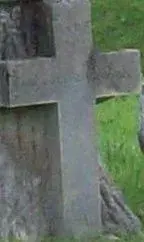

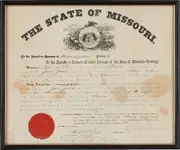

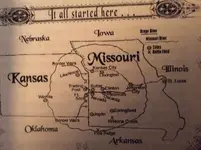
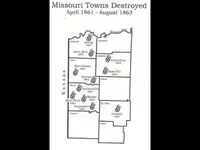
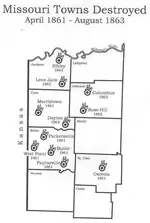




 You and yer posts are most definitely an Asset To This Forum. Glad to see that light shinin'.
You and yer posts are most definitely an Asset To This Forum. Glad to see that light shinin'. 


